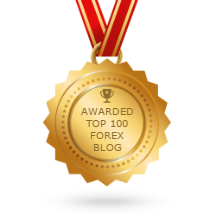Many traders on the retail side of the market do not understand the instruments that they trade.
So an article such as this is very apt, as it will explain the similarities and differences between forex and CFDs.
What is Forex?
Forex stands for foreign currencies. Therefore, forex assets are usually currencies of various countries that are listed for trading either in the interbank market or on the OTC market.
Forex trading involves the buying and selling of these currencies with the aim of profiting from the change in the rates of exchange between two currencies that are paired together.
What is used as the measure of profit or loss is the change in the exchange rate between currency 1 and currency 2, found in the pair. Forex assets are always traded in pairs.
What Are CFDs?
CFDs are also known as Contracts for Difference. A CFD is a derivative trade contract that allows traders to speculate on differences in prices of fast moving assets in various global markets.
By definition, assets listed as CFDs are spread across various markets such as stocks, bonds, commodities and indices.
So what are the similarities and differences between forex and CFDs?

Similarities Between Forex and CFDs
1. Leverage
Both forex and CFD trading are leveraged trading activities. This means that it is possible to open positions which are larger than the trader’s capital can ordinarily carry.
This is because of the extra capital that is provided by the brokers in the form of leverage for every trade that is executed on a forex or CFD platform.
2. Regulation
Both the forex and CFD markets are well-regulated markets, governed by rules and regulations passed down by either government-owned regulatory agencies, or industry self-regulating agencies.
This makes these markets generally safe for investors to participate in.
3. Charting and Software
There are lots of brokers who offer both forex and CFD trading, using similar charting packages and software. This makes it easy to trade both markets using the same software, perform the same sort of chart analysis as well as use similar add-on software such as expert advisors and virtual private servers (VPS) made for trading purposes.
4. Price Quotation System
Prices of forex and CFD assets are quoted with a two-price quotation system: prices are quoted with a bid and ask price. Therefore, short trades are executed using the bid price, and long trades are executed at the ask price.
5. Trade Size Calculation
Sizes of trades as well as price movements are done in the same way for both forex and CFD assets. What does this imply?
This means that trade sizes are measured in lots, and price movements are measured in pips, whether you are trading the EUR/USD or crude oil.
Differences Between Forex and CFDs
The following differences exist between forex and CFDs.
1. Pairing of Assets
All forex trades involve the pairing of two currencies. This is because a currency is exchanged for another in a forex transaction at a given rate. Therefore, it is not possible to trade a currency by itself: it must be traded in a pairing with another currency.
CFD assets are single, stand-alone assets which not traded in pairs. A CFD asset is a single entity, and profits or losses are calculated on the basis of a change in the price of that asset with time.
2. Interbank Trading
Forex can be traded on the interbank market as well as the OTC market. What does this mean? Interbank trading of forex occurs at the level of the big banks, acting as liquidity providers that sell forex assets to either brokers or high-end customers. The brokers who act as market makers then re-sell the forex assets to low-end customers using their dealing desks.
CFD trading is not done at the level of the interbank market, but solely at the level of the broker’s dealing desk. Traders who trade CFDs obtain their pricing from the broker’s dealing desk, which is also where the trade executions are handled.
3. Leverage/Margin Requirements
Even though these markets are both leveraged markets, the degree of leverage available for trading forex varies with that required for trading CFDs.
Generally speaking, leverage provided for forex trading by brokers is higher, and the margin required lower than for CFD trading. It is typical to get leverage of up to 1:100 for forex trading, but leverage for CFD trading is usually capped at 1:20 (sometimes 1:50).
4. Contract Expiration
The CFDs market features several assets, whose underlying instruments have contract expirations.
What this means is that any open positions on certain CFD assets will automatically be closed once the contract expires, and the trade settled in profit or loss, depending on the settlement price.
Forex spot contracts do not expire. A trader can hold a forex position open for as long as is desired.
5. Trade Types
Trading forex can only be done by buying or selling a currency pair; your profits depend on whether the movement of the currency pair are in your chosen direction.
In CFDs, you can make money from other ways apart from just buying and selling an asset. For those who do not like to be constrained to doing the same thing over and over again, the other trade types found in CFDs provide an alternative way of going about trading business.
Conclusion
These are the similarities and differences between forex and CFDs. It is important to understand these differences so as to be able to use them to your trading advantage.
For instance, a knowledge of the contract expirations that are only obtainable with CFD assets will help swing and position traders understand how and when to close their positions.
Know your trading instruments, and how similar or different they are.
